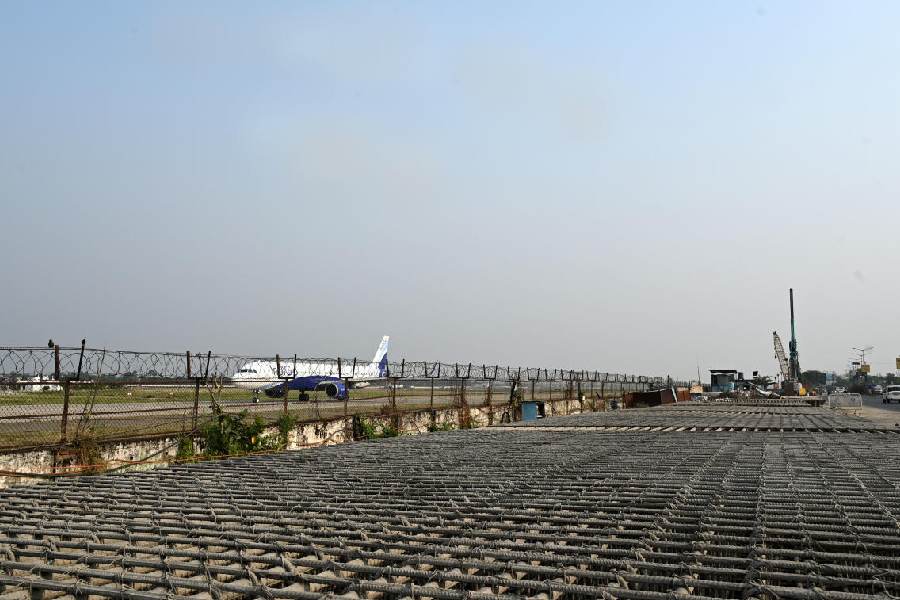The possible solutions to the airport-New Barrackpore Metro project tangle are being prepared following a meeting between airport and Metro Railway authorities in Delhi recently.
Several officials of both airport and the Metro said changes in design and construction methods are being planned so that safety of flight operations is not compromised. Both central government agencies have agreed in principle to allow the stalled project to be revived.
The airport-New Barrackpore Metro project is stalled for several months and now it is set to be revived.
On April 10, a meeting was held in Delhi between officials of the civil aviation ministry and Metro Railway, where technical solutions were discussed, said sources.
“It has been agreed that Metro Railway can carry on with the work after changing some of the plans so that flight safety is not compromised. The modalities are now being worked out,” said a senior official of Calcutta airport.
“The Metro project will be beneficial for many people and so, we also want the work to resume,” he said.
Metro spoke to several officials and learnt about the solutions being discussed.
Station entry-exit point
Among the proposed solutions is reducing the height of entry-exit points of the New Barrackpore station that falls in the landing path of flights, said officials.
Initially, the plan was to make the height of the entry and exit points of the station 4.5 metres above the surface of the ground.
“Now we are looking into the possibility of reducing the height to almost the surface level. This will not cause any obstruction to the flight landing path,” said a senior railway official.
He said lowering the height would not cause any problem for passengers coming in or out of the underground station. “Passengers can enter and leave the station through a shaft,” he said.
“Some stations in Delhi Metro, like Connaught Place, have similar entry and exit points,” the official said.
Shifting approach lights
Another objection raised by the airport authorities was the
proposed shifting of the last two rows of approach lights to the
northern end of the main runway. Metro authorities had earlier proposed shifting the approach lights on the structure for entry and exit
to the station.
This would have reduced the capacity of the runway, airport officials had pointed out.
“The underground station can be shifted and stretched to the other side of Jessore Road. But this is a preliminary thought and would require permission from local police also for possible roadblocks,” said a source.
A railway official said the option was being examined. “It has not yet been finalised,” the official said.
If the structure is shiftedthen the approach lights would remain, said airport officials.
Crane arm
Another objection raised by the Calcutta airport authorities was the 36m-high arm of cranes that would be used for the construction of the diaphragm wall of the underground tracks from the airport to New Barrackpore, further north.
“The construction method can be tweaked so the height of the crane’s arm can be lowered to 18m during thework. This will not compromise the safety of flight operations. The proposal is under consideration,” said a railway official.
The cranes in question are now lying idle off Jessore Road, along the perimeter wall of the airport.
Theywere brought there by the Metro authorities for the construction of the diaphragm wall of the underground tracks from the airport to New Barrackpore, further north. The construction will be adjacent to the airport’s boundary wall.
The cranes were supposed to pick up pre-fabricatediron cages, raise them to a height of 30m above the ground and then lower them into the excavated pit below, said officials.
However, since last year, work has remained stalled because of the objections raised by the airport authorities. They had said a crane’s arm could cause safety hazards for flights operating in and out of the airport.
According to officials,if a crane’s arm is raised to 30m, there could be problems in the functioning of communication, navigation and surveillance equipment in and around the airport.
Also, the touchdown point, where the wheels of a plane touch the runway while landing, can be pushed further away from the edge of the runway.
